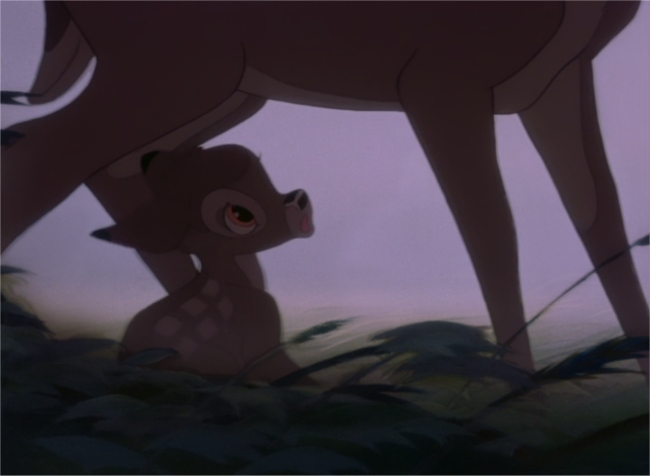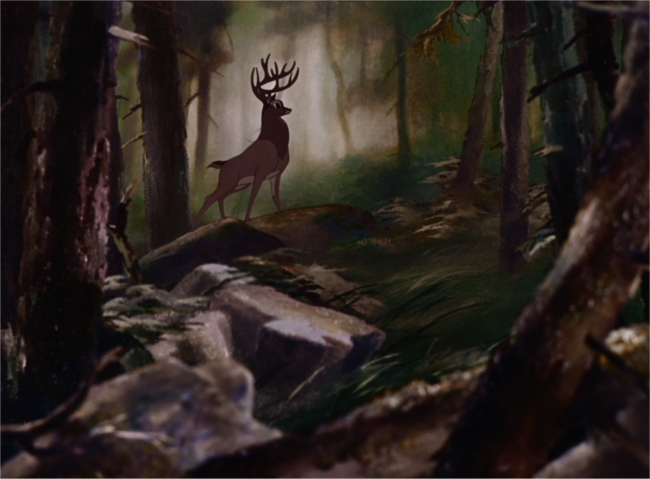
Like many of the greatest movies ever made, there's not a big audience for 1942's Bambi. People looking for a movie about the grim reality that brings about a mother's death when her child is an infant aren't usually the sort who want to see cutsey animals romping in the forest. And people who like cuddly bunnies and fawns aren't usually eager to hear about animals getting shot. Like 2001: A Space Odyssey or Citizen Kane, it's a movie most people feel is deserving of respect even as they're reluctant to actually sit still and watch the thing. Which is too bad because its visual artistry is an absolutely breathtaking interpretation of nature. Meanwhile, its story of an animal community with human characteristics is as fascinating an interpretation of human nature.

Disney's artists clearly studied forests and animal anatomy but the film isn't an exercise of painters and animators capturing photorealism. The soft pastels and gently washed out browns and greens accompany happier springtime scenes.

More serious, anxious moments switch to cool gloom and ominous silhouettes.

Action sequences leap into saturation and the forest fire, composed of stylishly curling flame, complements its oranges and reds with an anachronistic but perfect purple.

One can see the influences of Arthur Rackham, Caspar David Friedrich, and the Impressionists. In this strange version of reality, a young deer, Bambi (Bobby Stewart, Donnie Dunagan, Hardie Albright, John Sutherland), is the prince among a community of mostly herbivorous animals--the exceptions mainly being the birds. Disney's artists evoke the mannerisms of human children with awesome skill and it's incredible to think Thumper (Peter Behn, Tim Davis, Sam Edwards) is composed of a series of hand drawn still images.

Animation of adolescent and adult animals is less evocative of humanity but the film never truly fails visually.
What is this story of a perfect, innocent world intruded on by murderous man? The film has famously made many vegetarians and animal activists, including Paul McCartney, yet it was made by men who weren't and who didn't become vegetarians. In fact, the film's based on a book written by a hunter, an Austrian author and critic named Felix Salten.

Why on earth would a sport hunter write a story like this? Like Pinocchio and Dumbo, the underlying values at play in the story are almost completely alien to-day. In 1961's The Misfits, also a masterpiece, Marilyn Monroe's character doesn't understand how Clark Gable's character can capture and kill wild mustangs to sell their corpses for dog food. Gable explains to her that nothing can live without something else dying. He later clearly decides mustangs are too good for dog food, and rightly so, but, again, neither he nor Monroe became vegetarians because of it.
Perhaps it's because in those days, when the United States was more predominantly agricultural, the unpleasant reality of the costs of continued human existence were a more visible part of every day life. They aren't any less intrinsic to-day, they're just less visible.

You could have your heart broken by Bambi, you could really and truly sympathise with him, and you could still dine on his mother at the end of the day. Maybe, though, a respect for the beauty and undeniable sensitivity in nature might make you respect nature and refrain from taking savagely and greedily from her.
Bambi is available on Disney+.

No comments:
Post a Comment